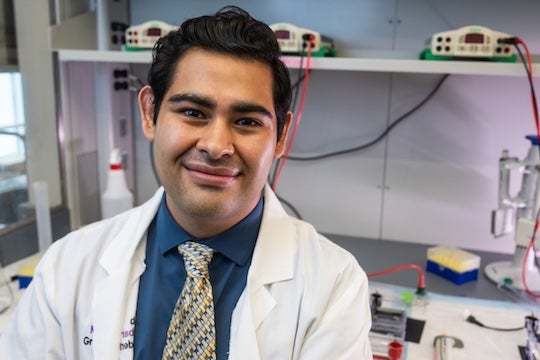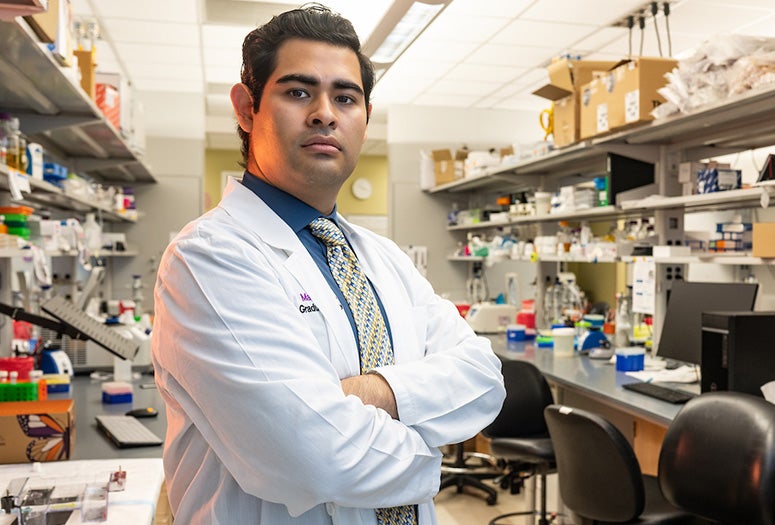Rice University bioengineer Mario Escobar has won a Transformational Project Award from the American Heart Association (AHA) to develop a new therapy for heart failure, one of the most common and deadly cardiovascular conditions.

After a heart attack, the heart loses energy because its cells produce fewer mitochondria — tiny structures often referred to as “the powerhouses of the cell.” That energy loss sets off a cascade of damage that can eventually lead to heart failure. Escobar, assistant research professor of bioengineering working in the Hilton lab at Rice, will explore a new way to help the heart replenish its energy reserves by boosting the number and function of mitochondria.
“My work focuses on creating novel therapies to control metabolism, specifically in the heart, in order to improve recovery rates for different pathologies,” Escobar said.
Escobar, together with Rice’s Isaac Hilton, associate professor of bioengineering and a Cancer Prevention and Research Institute of Texas (CPRIT) Scholar, and Dr. Ravi Ghanta, chief of cardiac surgery at Ben Taub Hospital and professor of surgery at Baylor College of Medicine, will study the effectiveness of a synthetic biology tool that can activate the genes that regulate mitochondrial biogenesis — the process by which new mitochondria are made.
“We created a transcriptional control system that turns on genes in cardiac cells enabling them to produce more mitochondria,” Escobar said. “We have actually seen that this allows the cells to recover that lost energetic function, and that recovery actually leads to improved heart function overall. If we can increase energy levels in heart cells, this tool could be developed into a therapy to help patients after a heart attack — leading to longer and healthier lives.”

The project builds on work Escobar began as a Ph.D. student in Hilton’s lab at Rice, where he developed synthetic biomolecular tools to manipulate cell behavior. Over time, his focus shifted toward using those tools to address cardiac disease. His graduate and postdoctoral work — divided between Rice and Baylor — has allowed him to refine both the molecular biology and the animal testing required for translational cardiovascular research.
“Mario has really done a fantastic job spearheading this project,” Hilton said. “He has developed a lot of new assays and been integral to building a bridge and strengthening ties between Rice and Baylor.”
The team will test the gene control tool in both animal models of heart failure and in human heart tissue to determine whether the mitochondria-boosting therapy could be viable in future clinical applications.
“Escobar is leveraging his expertise in synthetic biology to develop translational tools to improve cardiac metabolism and energetics,” Ghanta said. “Through this interdisciplinary collaboration we hope to develop bench to bedside translational therapeutics.”
The project aligns closely with the AHA’s mission to improve outcomes and quality of life for people affected by cardiovascular disease.

